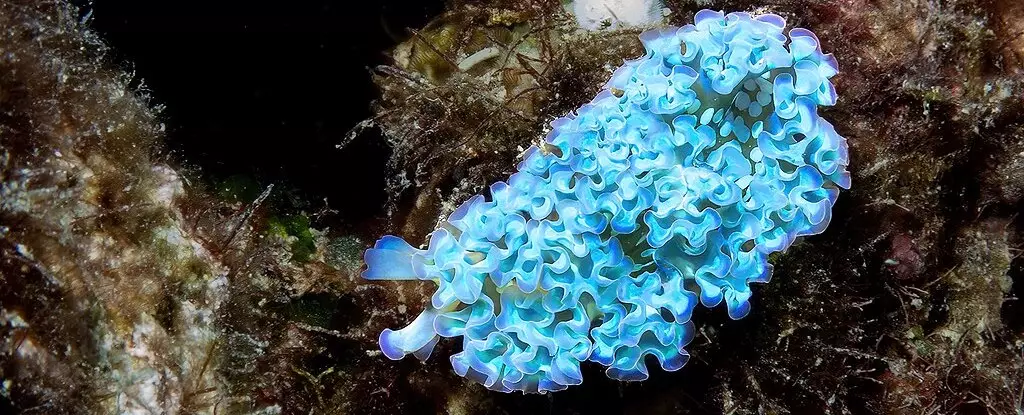Imagine wandering along the shores of a beach, only to find an organism that seems to have emerged straight from a sci-fi film—a creature that not only survives but thrives by purloining the very essence of life from others. The lettuce sea slug, or Elysia crispata, is not just another mollusk; it represents an astonishing feat of evolutionary ingenuity. This sea slug has cracked the ultimate code of survival, cleverly appropriating chloroplasts from the algae it consumes and retrofitting them into its own cellular arsenal. If that doesn’t evoke a sense of wonder and disbelief, what will?
Hijacking Nature’s Machinery
What distinguishes the lettuce sea slug from other species isn’t merely its peculiar appearance, reminiscent of a vegetal creation, but its unique method of energy acquisition. While most organisms rely on straightforward digestion to extract nutrients, this sea slug takes a quantum leap in biological innovation. Instead of breaking down the chloroplasts of the algae, it captures them and stores them within specialized structures known as kleptosomes. These cellular stowaways are not just decomposed remnants on a plate, but living entities that contribute to the slug’s vitality. The ingenuity of nature is laid bare when one considers that a creature can enlist the biological artillery of another to fuel its own existence.
The Heart of an Energy Thief
As cell biologist Corey Allard points out, this slug’s biological antics challenge our traditional understanding of symbiosis. While many organisms exist in harmony with others, the lettuce sea slug takes it a step further, presenting an almost brazen attitude toward parasitism. This creature serves as a reminder that nature operates not just on ethics and cooperation but also on cunning and adaptation. It poses a philosophical quandary for us: should we view such energy thievery as resourceful evolution or an act of biological immorality? Is it a crime if the very laws of nature permit it?
A Kaleidoscope of Color and Health
Delving into the realm of aesthetics, the lettuce sea slug also showcases a fascinating connection between survival and coloration. The hue of these sea slugs varies dramatically based on their nutritional health. When plentifully fed on algae, the slugs boast a lush, verdant appearance. However, in leaner times, their vibrant greens fade to a striking orange—a testament to nature’s way of signaling distress and adaptation. This shift in color may not simply be a cosmetic variable; it insinuates survival strategies, like altering their appearance to evade predation. Such color-changeability hints at complex interactions in the oceanic ecosystem, where shades may serve as both camouflage and a barometer of health.
Implications for Evolutionary Biology
The lettuce sea slug is more than just a curious organism; it implies deeper ecological understanding about hybridization in evolutionary biology. Its ability to sustain chloroplasts raises questions about the process of evolution itself. How many other organisms unknowingly integrate borrowed abilities? Could this phenomenon explain major evolutionary step-changes, similar to the theorized engulfment of ancient bacteria that led to the formation of mitochondria in eukaryotic cells? The implications can be profound, suggesting that evolution may involve far more complex interactions than we previously understood.
A Reflection on Human Ingenuity
In an era where humans often appropriate resources at will, the lettuce sea slug draws an intriguing parallel. It is a living testament to the potential for adaptation and resourcefulness among life’s many expressions. The slug not only espouses the philosophy of survival of the fittest but also beckons us to reconsider our relationship with nature. Are we celebrating coexistence, or are we emulating the slug’s audacious theft? In our quest for sustainability, perhaps it’s time to draw inspiration from this marine trickster, striking a balance between innovation, integrity, and the careful stewardship of our shared resources.

